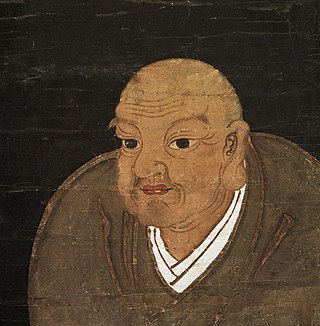
Nichiren was a Japanese Buddhist priest and philosopher of the Kamakura period.

Nichiren Buddhism, also known as Hokkeshū is a branch of Mahayana Buddhism based on the teachings of the 13th-century Japanese Buddhist priest Nichiren (1222–1282) and is one of the Kamakura period schools. Its teachings derive from some 300–400 extant letters and treatises either authored by or attributed to Nichiren.

Nichiren Shōshū is a branch of Nichiren Buddhism based on the traditionalist teachings of the 13th century Japanese Buddhist priest Nichiren (1222–1282), claiming him as its founder through his senior disciple Nikko Shonin (1246–1333), the founder of Head Temple Taiseki-ji, near Mount Fuji. The lay adherents of the sect are called Hokkeko members. The Enichizan Myohoji Temple in Los Angeles, California serves as the temple headquarters within the United States.
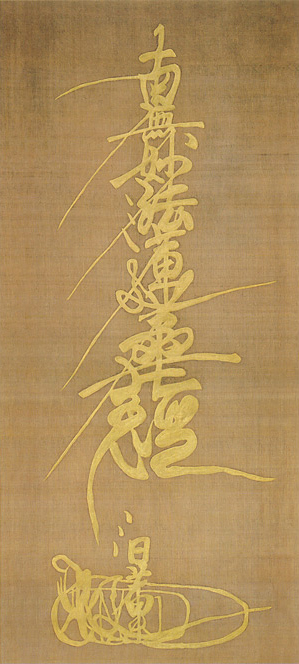
Namu Myōhō Renge Kyō (南無妙法蓮華経) are Japanese words chanted within all forms of Nichiren Buddhism. In English, they mean "Devotion to the Mystic Law of the Lotus Sutra" or "Glory to the Dharma of the Lotus Sutra".

In Buddhism, Buddha, "awakened one", is a title for those who are awake, and have attained nirvana and Buddhahood through their own efforts and insight, without a teacher to point out the dharma. The title is most commonly used for Gautama Buddha, the founder of Buddhism, who is often simply known as "the Buddha". Buddhahood is the condition and rank of a buddha "awakened one". This highest spiritual state of being is also termed sammā-sambodhi.

Soka Gakkai is a Japanese Buddhist religious movement based on the teachings of the 13th-century Japanese priest Nichiren as taught by its first three presidents Tsunesaburō Makiguchi, Jōsei Toda, and Daisaku Ikeda. It is the largest of the Japanese new religions and claims the largest membership among Nichiren Buddhist groups. The organization bases its teachings on Nichiren's interpretation of the Lotus Sutra and places chanting "Nam Myōhō Renge Kyō at the center of devotional practice. The organization promotes its goals as supporting "peace, culture, and education".
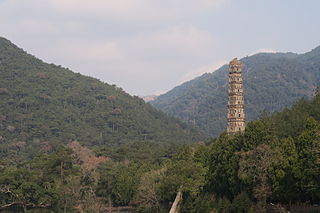
Tiantai or T'ien-t'ai is an East Asian Buddhist school of Mahāyāna Buddhism that developed in 6th-century China. The school emphasizes the Lotus Sutra's doctrine of the "One Vehicle" (Ekayāna) as well as Mādhyamaka philosophy, particularly as articulated in the works of the fourth patriarch Zhiyi. Brook Ziporyn states that Tiantai is "the earliest attempt at a thoroughgoing Sinitic reworking of the Indian Buddhist tradition." According to Paul Swanson, Tiantai Buddhism grew to become "one of the most influential Buddhist traditions in China and Japan."

Zhiyi also Chen De'an (陳德安), is the fourth patriarch of the Tiantai tradition of Buddhism in China. His standard title was Śramaṇa Zhiyi (沙門智顗), linking him to the broad tradition of Indian asceticism. Zhiyi is famous for being the first in the history of Chinese Buddhism to elaborate a complete, critical and systematic classification of the Buddhist teachings. He is also regarded as the first major figure to make a significant break from the Indian tradition, to form an indigenous Chinese system.

Nichiren Shū is a combination of several schools ranging from four of the original Nichiren Buddhist schools that date back to Nichiren's original disciples, and part of the fifth:
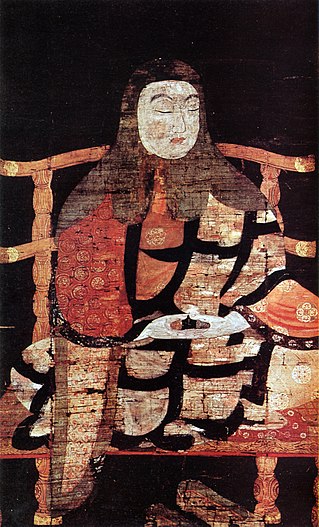
Saichō was a Japanese Buddhist monk credited with founding the Tendai school of Buddhism based on the Chinese Tiantai school he was exposed to during his trip to Tang China beginning in 804. He founded the temple and headquarters of Tendai at Enryaku-ji on Mount Hiei near Kyoto. He is also said to have been the first to bring tea to Japan. After his death, he was awarded the posthumous title of Dengyō Daishi (伝教大師).

Gohonzon (御本尊) is a generic term for a venerated religious object in Japanese Buddhism. It may take the form of a scroll or statuary. The term gohonzon typically refers to the mainstream use of venerated objects within Nichiren Buddhism, referring to the calligraphic paper mandala inscribed by the 13th Japanese Buddhist priest Nichiren to which devotional chanting is directed.

The position and treatment of animals in Buddhism is important for the light it sheds on Buddhists' perception of their own relation to the natural world, on Buddhist humanitarian concerns in general, and on the relationship between Buddhist theory and Buddhist practice.

The Three Ages of Buddhism, also known as the Three Ages of the Dharma, are three divisions of time following Shakyamuni Buddha's death and passing into Nirvana in East Asian Buddhism.
Sadāparibhūta Bodhisattva, Never Disparaging Bodhisattva, appears in Lotus Sutra Chapter 20 which describes the practices of Bodhisattva Never Disparaging, who lived in the Middle Period of the Law of the Buddha Awesome Sound King. He persevered in the face of persecution for the sake of the correct teaching, and finally attained Buddhahood. Bodhisattva Never Disparaging was Shakyamuni Buddha in one of his past lifetimes.
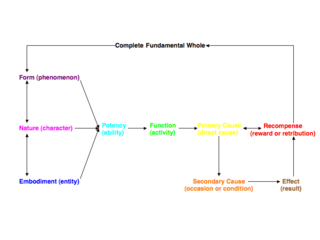
The Ten suchnesses are a Mahayana doctrine which is important, as well as unique, to that of the Tiantai (Tendai) and Nichiren Buddhist schools of thought. The doctrine is derived from a passage found within the second chapter of Kumarajiva's Chinese translation of the Lotus Sutra, that "characterizes the ultimate reality of all dharmas in terms of ten suchnesses." This concept is also known as the ten reality aspects, ten factors of life, or the Reality of all Existence.
Viśiṣṭacāritra is a bodhisattva mentioned in the 15th, 21st, and 22nd chapters of the Lotus Sutra. He is one of the four great perfected bodhisattvas who attends Gautama Buddha and protects the Lotus Sutra and its devotees. The other three are Anantacaritra, Visuddhacaritra, and Supratisthitacaritra; together they make up the four great primarily evolved bodhisattvas. Viśiṣṭacāritra is also believed to represent the "true self" characteristic of buddhahood, which is the selflessness of Nirvana.
Kōsen-rufu (広宣流布), a phrase found in the Japanese translation of the Buddhist scripture Lotus Sutra, is informally defined to as "world peace through individual happiness." It refers to the future widespread dissemination of the Lotus Sutra.
Bodhisattvas of the Earth, also sometimes referred to as "Bodhisattvas from the Underground," "Bodhisattvas Taught by the Original Buddha," or "earth bodhisattvas," are the infinite number of bodhisattvas who, in the 15th chapter of the Lotus Sutra, emerged from a fissure in the ground. This pivotal story of the Lotus Sutra takes place during the "Ceremony in the Air" which had commenced in the 11th chapter. Later, in the 21st chapter, Shakyamuni passes on to them the responsibility to keep and propagate the Lotus Sutra in the feared future era of the Latter Day of the Law.
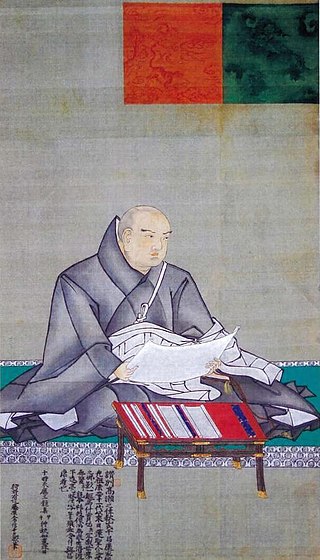
The Ongi Kuden (御義口伝) is an arcane hermeneutic text in Nichiren Shoshu Buddhism. The Kuden are the alleged oral teachings of Nichiren Daishonin on the Lotus Sutra, beginning on 1 January 1278 which were recorded and compiled by his senior disciple Nikkō Shōnin thirteen years after the death of his master.

Ushitora Gongyo is a Buddhist liturgy service conducted in Nichiren Shoshu Buddhism. The service is traditionally held at 2:30 AM at the Kyakuden building of Taisekiji Head Temple, located within the lower slopes of Mount Fuji, Japan.
















